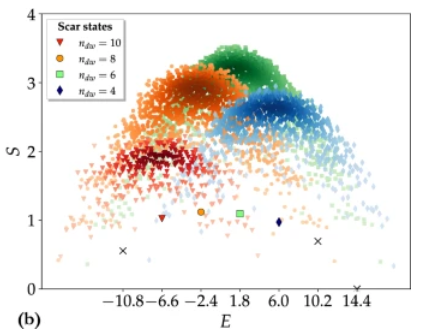EPJ ST: Nuggehalli M. Ravindra new Editor on board
- Details
- Published on 17 July 2025

The publishers are very pleased to announce that Dr. Nuggehalli M. Ravindra (Ravi) has recently joined the EPJST Editorial Board.
N M Ravindra (Ravi) is Professor of Physics at the New Jersey Institute of Technology (NJIT). He was the Chair of the Physics Department (2009-13) and Director, Interdisciplinary Program in Materials Science and Engineering at NJIT (2009-2016). Ravi is the Founding Editor of Emerging Materials Research. He has been a frequent Guest Editor of several journals including JEM, the Journal of Electronic Materials; JOM, Polymers for Advanced Technologies and MDPI Journals. Before joining NJIT in 1987, Ravi had been associated with Vanderbilt University, the Microelectronics Center of North Carolina (MCNC), North Carolina State University, Abdus Salam Center for Theoretical Physics (formerly ICTP, Trieste), Politecnico di Torino, CNRS associated labs in Paris and Montpellier. Ravi holds a PhD in Physics from Indian Institute of Technology (Roorkee, India), MS & BS in Physics from Bangalore University, India. Ravi and his research team have published over 350 papers in international journals, books and conference proceedings and 8 Books; his team has three issued patents; he has organized over 40 international conferences; and he has given over 80 talks in international meetings.
Ravi's research interests include devices, education, energy storage, materials, manufacturing, optical coatings, renewable energy, semiconductors and sensors.
EPJ B Highlight - Uncovering the magnetic responses of anisotropic semimetals
- Details
- Published on 14 July 2025

Calculations show that magnetic fields can alter the responses of anisotropic 2D semimetals to electric fields and temperature gradients – but only when applied perpendicular to the material’s plane
For solid-state physicists, graphene has become a posterchild of 2D semimetals: materials whose electronic structures fall between those of a metal and a semiconductor. Owing to the honeycomb structure of its carbon atoms, graphene hosts an orderly arrangement of Dirac cones – pairs of opposite-facing, cone-shaped energy bands that touch at a single point. Immediately surrounding such a point, electron energy varies linearly with momentum, just like for massless particles such as photons – leading to exotic and often useful electronic properties.
Through a new paper published in EPJ B, Ipsita Mandal at the Shiv Nadar Institution of Eminence, India, presents fresh calculations of how these properties vary in the presence of magnetic fields, particularly when 2D semimetals are structurally distorted. Her results show that these materials’ electrical and thermal responses are affected only when the magnetic field is oriented perpendicular to the 2D plane. This finding offers deeper insight into the electronic behaviour of semimetals – potentially broadening their already wide range of technological applications.
EPJ Plus Highlight - Hybrid algorithm uncovers robust scar states for quantum computing
- Details
- Published on 14 July 2025

An algorithm that merges classical and quantum computing resources could help reveal robust quantum states hidden within chaotic, noisy systems
Since today’s quantum computing architectures are inherently noisy, they still struggle to generate large amounts of entanglement between qubits. One promising solution could be to target quantum scar states, which can emerge in complex, many-body systems. These states are unusually simple compared with their chaotic surroundings, and they may offer a more robust way to store quantum information – making them especially attractive for building stable quantum logic gates.
Through new research published in EPJ Plus, an international team led by Gabriele Cenedese at the University of Insubria, Italy, demonstrates how the limited entanglement in noisy quantum computers could be transformed into an advantage, making it easier to identify scar states within chaotic quantum systems. Involving a specialised hybrid algorithm, the team’s approach could help pave the way toward more scalable quantum architectures – reducing the need for complex and costly error-correction techniques.




